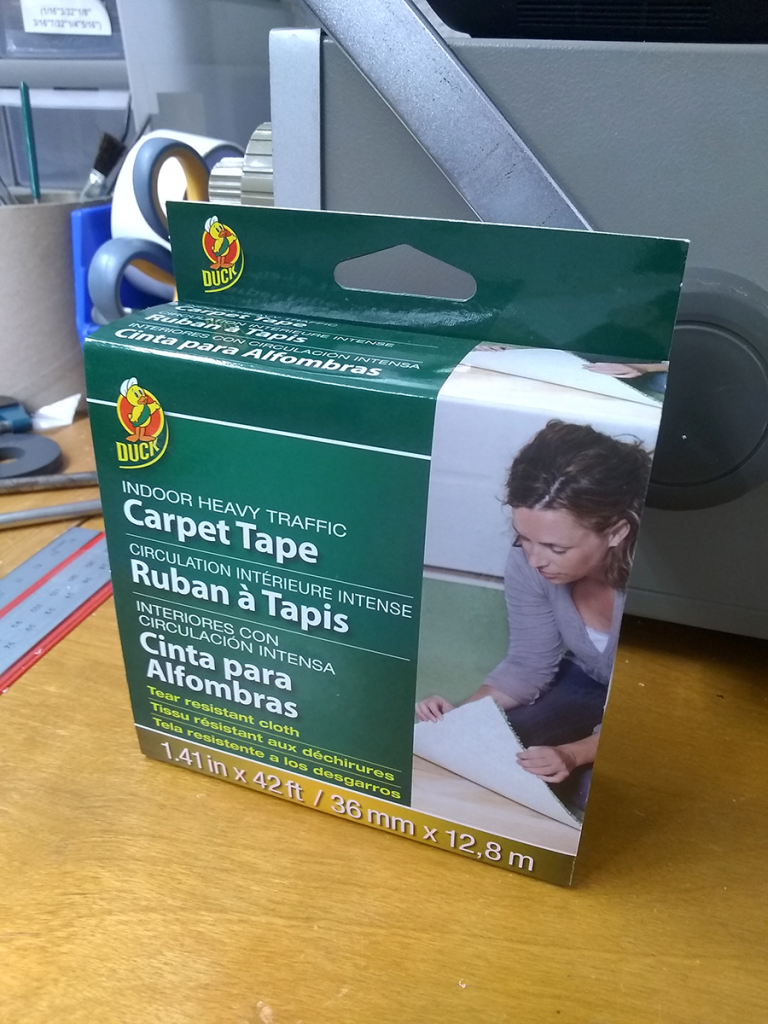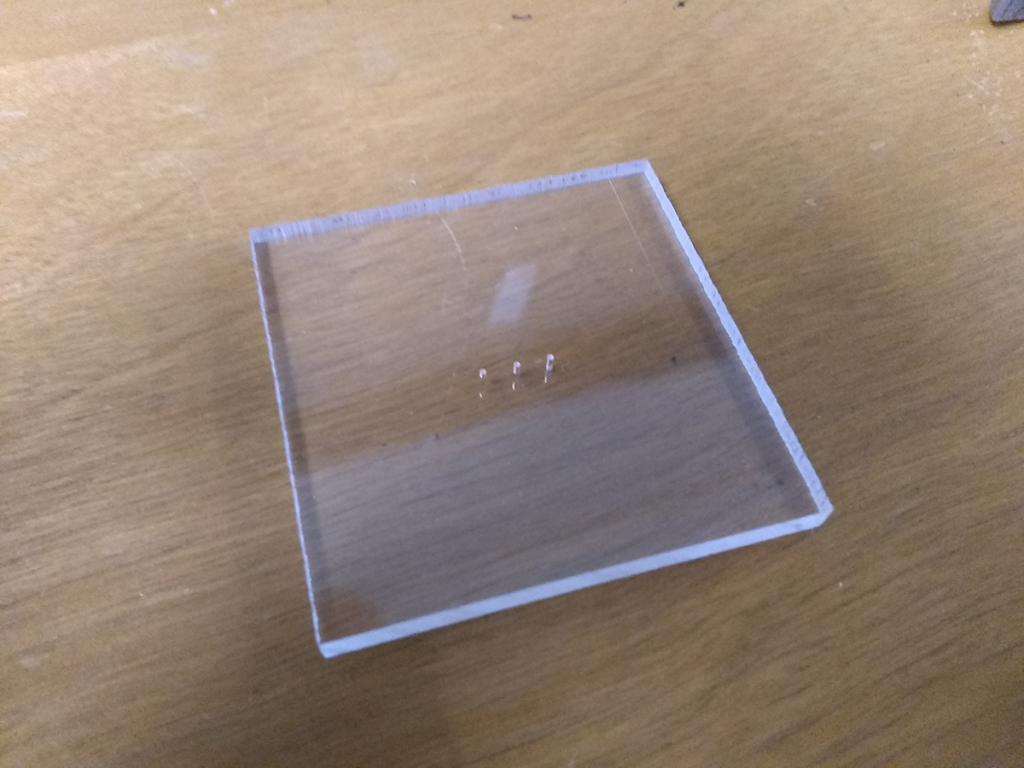
Not a lot of carpet in a machine shop. With the exception of a few small squares adhered to the bottom of certain table legs – they slide better! – there’s none to be seen outside our offices. Carpet would only tangle up the metal swarf, and that’s all-around no good.
(Incidentally, mouse pads are excellent for sliding furniture about. One side slips, the other side grips. Use them wisely.)
So why carpet tape? It’s a powerful, but not too powerful, double-sided adhesive with a woven cloth embedded within. When working with various machines around the shop, we have different tools at our disposal to hold our workpiece in place. A whole mess o’ clamps and vises to lock down most objects. Chucks to hold drill bit and mill bits and material turning in the lathe. There even exist mini versions to hold pieces in the CNC mill.
But we usually go for tape. Sometimes masking tape. Sometimes packing tape. 99% of the time, carpet tape.
It’s strong stuff, but not so strong that a heavy-duty putty knife can’t help you pry the work free. It’s only on the bottom of the workpiece, so you don’t have to design your toolpaths around it. It cuts easily with scissors, enabling you to place it strategically around your stock, minimizing the amount that comes into contact with a spinning end mill. Then, if it does, a shop rag and a little isopropyl alcohol cleans things up in a moment.
Isopropyl alcohol: handy solvent, very low toxicity (assuming you don’t drink it), evaporates rapidly. Inexpensive, readily available, and effective in very small quantities. Wonderful stuff.
On top of that, the low-adhesion, slippery paper that wraps the tape is easily measured with a micrometer. We keep a few scraps of that handy, enabling us to readily set the zero height of the mill without the tool ever having to contact the stock. (Current tape roll thickness: 0.1 mm.) Measure the new roll each time, make some notes, and you’re back to work.
It’s the gift that keeps on giving. And occasionally sticking to everything in sight. (It’s powerful stuff.)
